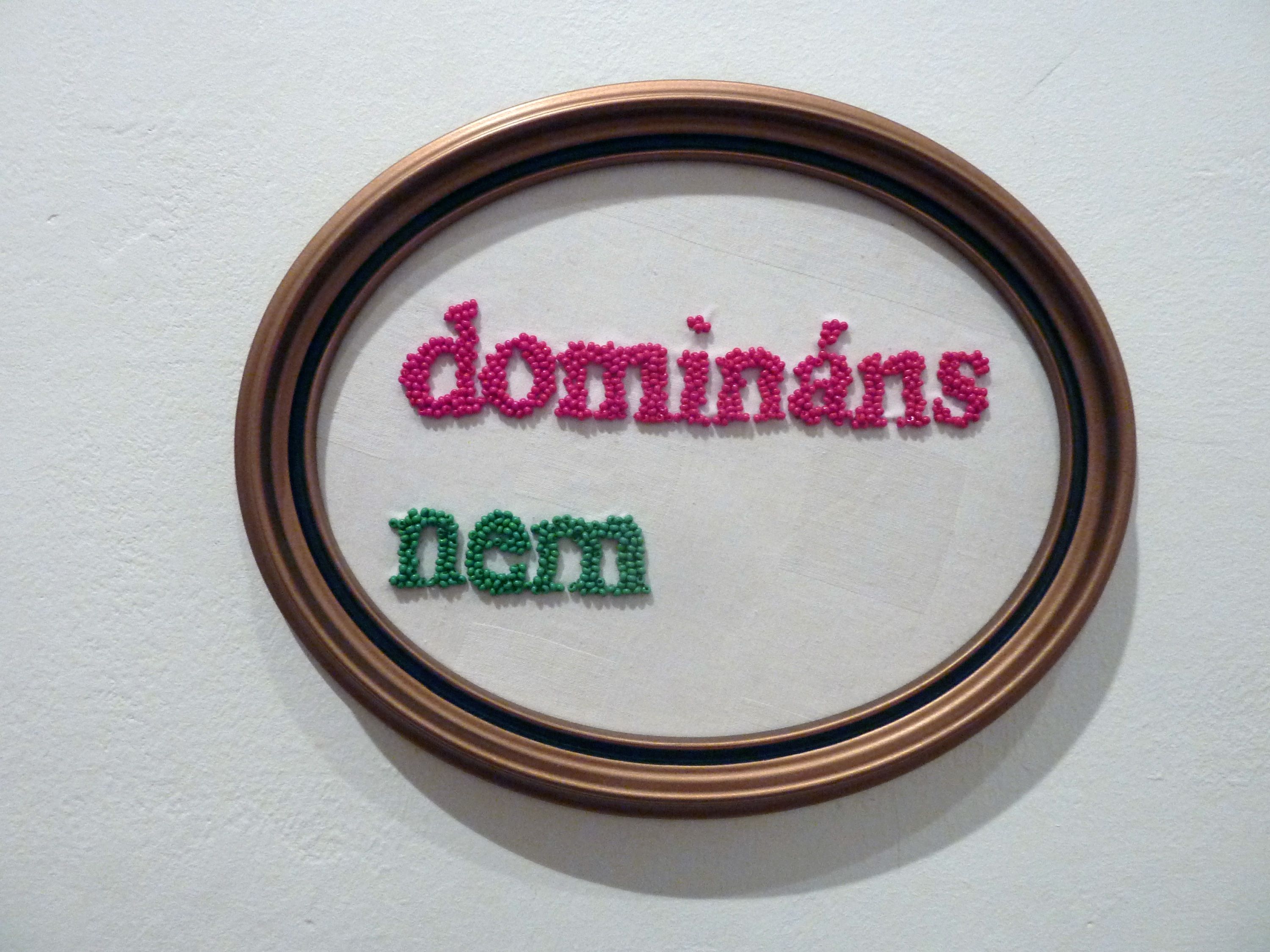Tibor Horváth
denial
| Venue: | acb Gallery |
| Date: | Jan 13 – Feb 10, 2012 |
Description
Tibor Horváth presents his solo exhibition at the acb Gallery for the first time. His works have been characterized by radical taboo-subverting, and sometimes provocation-laden, institutional and social critique. In addition to the genres of graphics, photography, video and installation, his works are often realized in actions as well as various fictional and operational institutions. As his main weapons, Horváth operates with irony, persiflage, intentional misreadings and reinterpretation. He approaches power structures from the vantage point of the individual, at the level of everyday problems and absurdities – a position that is further accentuated by his unsophisticated use of visual and textual tools.
The Hungarian title of the exhibition domináns nem is a play on words. As the common expression “dominant sex”, it usually signifies gender hierarchy. Tibor Horváth, however, takes advantage of the dual meaning of the Hungarian word nem, taken here to mean “no”, as in denial. Thus the title of the exhibition literally translates as “the dominant No”, dressed in the colours of the Hungarian flag. Denial – a questioning and “quote-unquoting” of existing structures – is a guiding thread that runs through the exhibition as a whole, creating points of connection between individual pieces and groups of artworks representing various genres and media. His social-political caricatures displayed in a wallpaper-like fashion reflect on the events of the last year and a half with the real-timeness of the direct present. Their acerbic humour signifies the artist’s symbolic guerrilla attack on indifference. His graphics posted on Facebook on a daily basis are of a similar motivation. Forty of these are featured in the graphics album published in conjunction with the exhibition, or displayed at the acb Gallery in a rethought handicraft rendition. In these works, Horváth reflects on nationalism, racism, chauvinism as manifested on a wide verbal and visual scale, and, just as in his caricatures, he often addresses current political issues. The remaining works on exhibit also express a gesture of opposition, which, while being of a more general tone, are nevertheless closely related to Hungarian reality. Among these, we find a “bottomless” piggy bank intended for the collection of donations in support of democracy (following deposit through the slot, the money drops straight to the floor) and a luxurious his and hers notebook collection carved from black granite and marble. In addition to the direct messages conveyed by the displayed artworks, Tibor Horváth’s exhibition, through its provocative opposition, and through elevating the subversion of hierarchy to the realm of allegory, explores the social role and responsibility of art and the artist. Moving, as he does, beyond mere enquiry, we are also left with no doubt about the answers.
